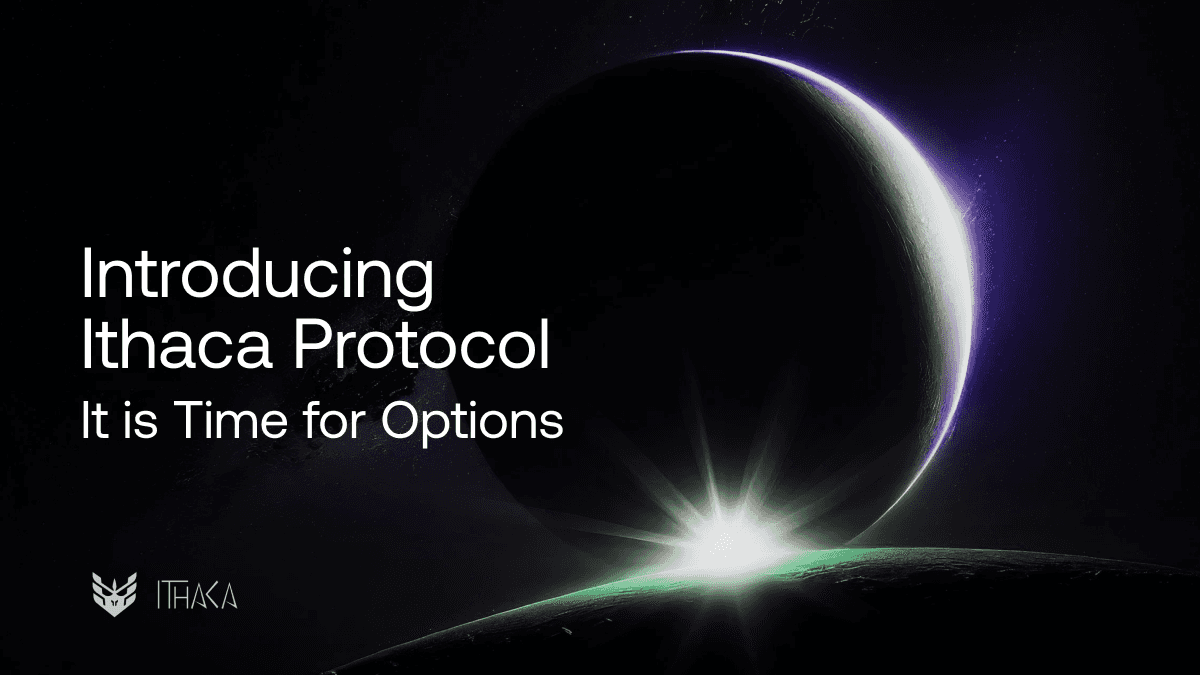by DappPunk
Background
Decentralized finance is coming of age. Ethereum staking yield is taking over as the benchmark “risk-free” rate. Layer 2 solutions are gradually resolving scalability issues. Security is improving with better auditing practices. And although slowly, crypto regulations are progressing in several jurisdictions. There is much to be done, but these achievements set the stage for the rapid growth in tokenized financial markets.
The time is now for DeFi to level-up — and derivatives are the next frontier. In any financial system, derivatives markets are the last ones to develop, but once they do their impact is overwhelming. Derivatives boost liquidity and provide better risk sharing tools. And they often drive price discovery given their sheer size. Global annual derivatives market volumes are in the hundreds of trillions.
In crypto, derivatives have become synonymous with perpetual futures (perps), which make up 97% of all total derivatives volumes. The development of perps is much welcome. But, perps are relatively simple products and do not provide market participants with the ability to fully express market views, hedge, or share risks.
For that, you need options.
Options empower us with tools to transfer and share risk across timeframes and scenarios. They are also intuitive and more retail friendly than we give them credit for (the post-covid explosion in retail option trading a case in point). Lastly, options are composable — you can combine options to replicate virtually any payoff and financial instrument — making them vital to the development of more complete and efficient markets.
This is where Ithaca Protocol comes in.
Ithaca, the Non-Custodial Composable Option Protocol
Ithaca enables complete markets in options, option strategies and structured products, consolidating multiple fragmented markets into a single optimized auction.
What if option markets started today? Would we do things differently with the benefit of hindsight and years of financial innovation? This is the question we asked ourselves, and we think we came up with a groundbreaking approach. For the first time across TradiFi, CeFi and DeFi, Ithaca presents every market participant with a mechanism to directly harness financial engineering and market making tools deployed by professional trading operations. All of this in an easy-to-use interface, powered by a verifiable matching engine, and with the transparency of the blockchain.
The Ithaca Matching Engine
At the core of Ithaca Protocol is the Ithaca Matching Engine, which, for the first time, allows orders for different instruments to be matched in a single auction. Using replication and portfolio dominance principles, the engine decomposes and recomposes all instruments using their basic building blocks, finding matches to optimize liquidity and execution. Imagine trading individual Lego pieces, instead of full Lego sets — it is a lot easier to find just what you need.
In doing so, the Ithaca Matching Engine uses multiple sources of liquidity that normally clear in isolation from each other. In other words, liquidity generation is not hindered by the existence of orders for multiple products, but rather enhanced by it, unlocking network effects.
Contrast this with standard continuous order book markets, where price discovery for each instrument happens in each order book as a silo, with “cross order book” or “cross instrument” liquidity delivered haphazardly and on an ad-hoc basis by market participants.
Moreover, the engine runs periodic, uniform-price, double-sided frequent batch auctions across all orders. (initially an auction every 10 mins) This means that liquidity is focused around each auction and each trade is executed on a level-playing field. Frequent Batch Actions are known to be an elegant solution for front-running/MEV issues that plague both traditional and crypto markets.
Matching in practice: an example
Let’s consider an example where three users want each to buy a call, sell a put and sell a forward, respectively.
In traditional order book markets, these three markets would require 2-sided liquidity (buyers and sellers) or 6 separate orders for the market to clear. In this case, no match would be found for our three traders.
However, the Ithaca Matching Engine is able to match these orders at the risk building block level, offering each participant a fill where there otherwise would be none. In one single-auction, these orders would be matched.
On-Chain Settlement
After orders are matched off-chain, all executed trades are settled on-chain via smart contracts. We use Arbitrum One for its speed and security (users can easily bridge funds from any blockchain directly on the app via our partnership with Axelar). The on-chain settlement architecture means users' funds are transparently available and risks are fully collateralized.
To address the cost of collateralization, Ithaca has developed a collateral optimization engine that calculates the maximum loss for the user’s entire portfolio, rather than for individual trades or trading pools. Collateral is posted and released dynamically as new orders are filled, maximizing capital efficiency at all times.
We are just getting started
We chose to make Ithaca a protocol that anyone can use, and not a centralized exchange. We want our technology to enable anyone to spin up a new option market for any underlier. We believe this is the way to disrupt and improve financial markets well beyond crypto. As the universe of tokenized assets increases, Ithaca's impact will only become more relevant.
We are building with the goal of progressive decentralization. Our roadmap includes a clear path for community governance. Our mission is to build permissionless cross-chain infrastructure enabling optimal risk sharing across time and event horizons. In other words, we want to make markets more efficient for everyone. We hope you will join us in our journey at
app.ithacaprotocol.io

